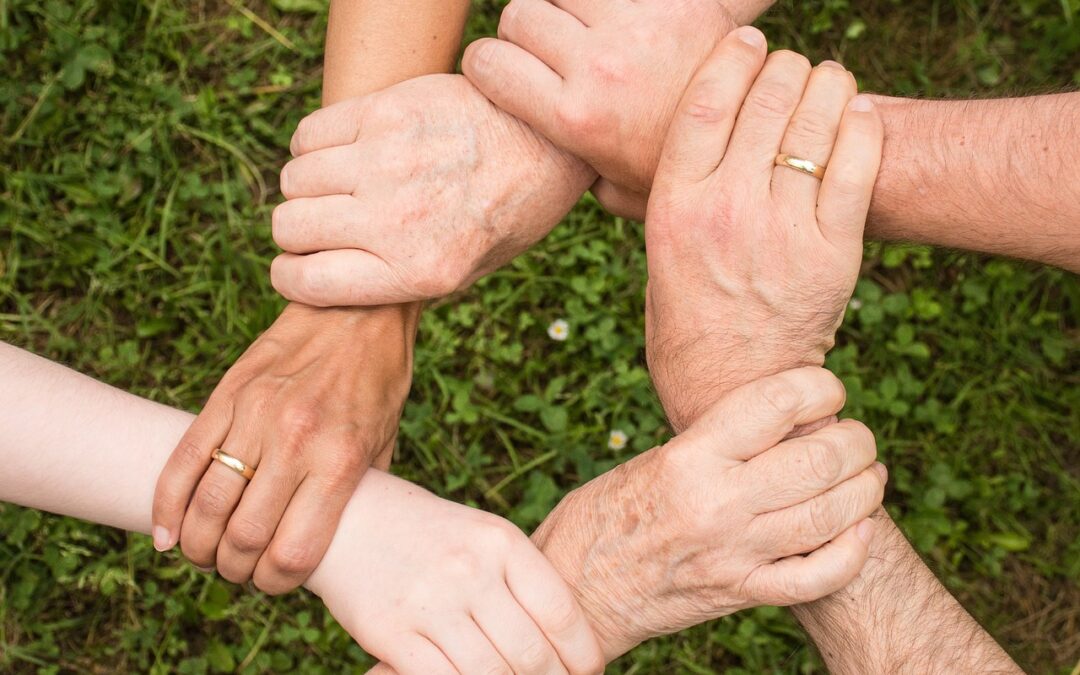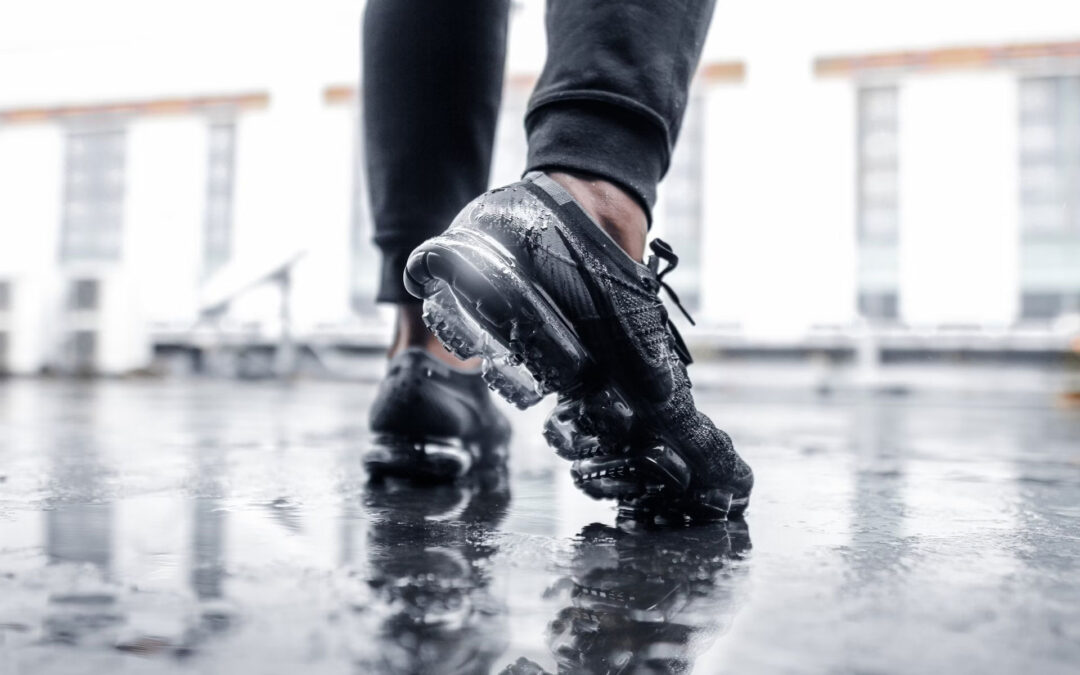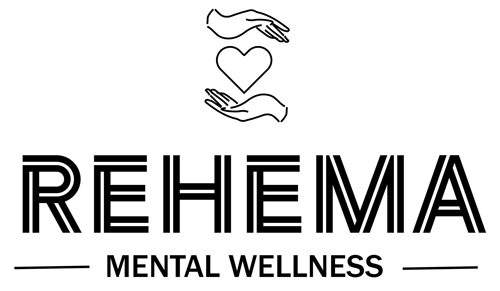
by Kagamba Muiruri | Jan 20, 2025 | Life Encouragement & Direction
The U.S. Surgeon General has identified loneliness as a public health crisis, comparing its impact on health to smoking and obesity. It’s a reminder of how vital human connection is—not just for emotional well-being but for overall health. Yet, building connections can feel daunting, especially if you live alone.
Living alone doesn’t have to feel lonely. Honestly, when I first moved into my apartment, I thought it might. But over time, I’ve realized that creating a sense of community here isn’t as hard as I expected—it just takes a little effort and intention.
What’s Worked for Me
Leaning Into Routines
I’ve found that routines make it easier to meet people. A morning walk around the complex or using shared spaces like the gym or lounge regularly creates those “Oh hey, I’ve seen you before” moments. These small, repeated encounters can turn into conversations and, eventually, friendly relationships.
Starting Small
Saying a quick “Hi” or complimenting someone’s dog or plant might feel insignificant, but it works! Those little interactions are an easy way to break the ice. They often lead to something bigger, and at the very least, it makes the space feel warmer.
Getting to Know My Neighbors
I used to think neighbors were just… people who happened to live near me. Now, I see them as potential friends—or at least friendly faces. For example, a neighbor of mine, Danny, taught me an important lesson about the value of building connections. Danny took the time to share his experiences about homeownership and even went the extra mile to connect me with a realtor and banker. If I hadn’t stopped to get to know him, I might never have taken that crucial step toward buying my first home. It’s a reminder that you never know where a simple connection might lead.
Whether it’s introducing myself when I move in, lending a hand with groceries, or just chatting in the hallway, I’ve found that these little efforts can make a big difference.
Being Present
People move in and out of apartments all the time, so I’ve learned to make the most of the time we have. Even if it’s just a few weeks or months, those small connections can brighten the day—for me and them.
Finding Your Groove
If you’re naturally outgoing, you might knock on a door to introduce yourself or host a small get-together. If you’re more like me—on the introverted side—joining a book club, community yoga class, or even just showing up to a mixer can make it easier to connect without too much pressure.
Building a community doesn’t mean you have to overhaul your schedule or change who you are. For me, it’s been about adding small moments of connection to my routine. Over time, those small moments add up. They’ve turned my apartment from just a place to live into a real home surrounded by familiar faces.
So, try it out. Say hi to the person next door. Smile at someone in the elevator. Maybe even join that yoga class. A little effort goes a long way—and it’s worth it.

by Kagamba Muiruri | Oct 28, 2024 | Life Encouragement & Direction
It was just another day on autopilot, following my usual running route. One foot in front of the other, gliding through the motions — until my shoelace betrayed me. One moment, I was cruising along; the next, I was in slow-motion, arms flailing, the ground rushing up to meet me. And there I was: sprawled out like a runner’s yard sale, with a bruised elbow, scraped knee, and dirt coating me from head to toe.
As I lay there, stunned, my inner critic pounced. “Should’ve skipped the run! You could’ve been cozy at home, but no, you had to be ambitious.” I rolled my eyes, wondering if the universe was nudging me toward a safer hobby — like bird-watching, streaming Netflix (no pun intended), or maybe even reading about running instead.
But as I lay on the ground, something shifted. Just as I was ready to throw in the towel, my wiser side piped up, calm and unwavering. “Alright, pity party’s over. You’ve fallen, but you’re halfway through. Finish what you started.” And that’s when it hit me: maybe this fall was a reminder that resilience isn’t about perfection — it’s about rising again.
With a little extra grit, I picked myself up, dusted myself off, and kept moving forward. As I got back up, a verse came to mind: “For though the righteous fall seven times, they rise again.” I realized that falling doesn’t mean failure; it’s simply part of the journey. Our strength isn’t in avoiding every stumble but in having the courage to rise each time we fall.
Maybe You’re Feeling Knocked Down, Too
If life’s been feeling a little heavy lately, or if you’ve had a fall (literal or figurative), remember this: strength is in the rise. You have it within you to get back up, dust off, and keep moving forward. So, tie those laces, stand tall, and take one brave step. You’ve got this.

by Kagamba Muiruri | Oct 7, 2024 | Life Encouragement & Direction
Embracing Life’s Changes
When I moved from Kenya to Wisconsin, it was one of the biggest transitions of my life. Everything was new—the culture, the climate, the people. Leaving behind the familiar was difficult, and there were moments of doubt and uncertainty about the future. But, as challenging as the experience was, it became a defining part of my journey. Change, though uncomfortable, is often necessary for growth.
Right now, I want to ask you: What transition are you going through? Whether it’s starting a new school year, moving to a different place, making new friends, or stepping into a new job, change is always a part of life. But the bigger question is: how do we handle it?
Let’s explore this idea through a surprising analogy—diaper changes.
The Diaper Change Metaphor
Have you ever noticed how much babies hate getting their diapers changed? They cry they wiggle, and they try to avoid it—even though we know the change is good for them. It’s uncomfortable in the moment, but without that change, they would be stuck in a messy situation—literally! Ignoring the need for a diaper change would lead to discomfort for both the baby and the parent, and in the long run, it could cause health problems.
Life transitions are not so different. They might feel uncomfortable or even painful at first, but they are often necessary for our well-being and growth. Just like diaper changes, these life changes help us move forward and avoid getting “stuck” in situations that no longer serve us.
Navigating Life Changes
When I first moved to Wisconsin, I felt like I was caught in an in-between stage. This feeling reminds me of the three phases of change described by William Bridges (2004): the ending, the neutral zone, and the new beginning.
- The Ending: Leaving my life in Kenya was the ending. It meant letting go of the familiar.
- The Neutral Zone: Adjusting to life in Wisconsin was the neutral zone. It was an uncertain, sometimes uncomfortable, period of figuring things out.
- The New Beginning: Finally, I settled into my new life. New routines, new friends, and new opportunities began to shape my experience.
But, like babies resisting diaper changes, I initially resisted the discomfort of that transition. Yet, just as a clean diaper keeps a baby healthy, navigating these life changes opened the door to growth and new opportunities.
Langston Hughes and the Winds of Change
Poet Langston Hughes beautifully captured the essence of change in his poem Winds of Change:
“The winds of change blow away despair
And fill the sails of hope and care.
They clear the skies, make way for light,
And turn the darkness into bright.”
Hughes reminds us that while change may feel like a strong wind pushing us in a new direction, it also clears the path for better things. Even when we resist life’s transitions, like a baby resisting a diaper change, those winds of change sweep away what’s no longer needed and make room for new growth.
How to Handle Life Transitions
So, how can we handle life’s transitions, especially when they feel overwhelming or uncomfortable? Here are a few strategies:
- Accept Your Feelings: It’s okay to feel anxious or uncertain when things change. Just like babies resist diaper changes, we resist life transitions because they feel uncomfortable. But acknowledging those feelings without letting them stop us is key. Acceptance and Commitment Therapy (ACT) teaches us to accept difficult emotions while still moving forward. Research shows this approach reduces stress and helps us cope better with life’s transitions.
- Focus on the Positive: Just as a diaper change prevents a rash, looking for the positives in a situation can help us handle change more easily. Cognitive Behavioral Therapy (CBT) encourages us to challenge negative thoughts and replace them with more helpful ones. Studies show that focusing on positive outcomes makes transitions less stressful and more manageable.
- Set Small Goals: When facing a big change, breaking it down into smaller steps can make it feel less daunting. When I first moved to Wisconsin, I focused on manageable tasks—like learning how to navigate the grocery store or finding places to meet new friends. Research shows that setting small goals helps people feel more in control during transitions.
- Lean on Support: Like a parent helping a baby through a diaper change, we need support during life’s big transitions. Friends, family, and mentors can provide guidance and comfort when we feel lost or overwhelmed. Studies show that having a strong support system reduces stress and makes change easier to navigate.
Conclusion
Whether it’s moving to a new place, starting a new chapter in your life, or even dealing with smaller daily changes, transitions are a constant part of life. And, much like babies need their diapers changed—despite how much they resist—embracing change is crucial for our growth, even when it feels uncomfortable.
Langston Hughes’s Winds of Change reminds us that while the winds of change may feel strong at first, they ultimately clear the way for new opportunities. By accepting the discomfort, focusing on the positive, setting small goals, and leaning on the support of others, we can navigate life’s transitions and come out stronger on the other side.
So, what change are you going through? And how will you handle it?

by Kagamba Muiruri | Oct 7, 2024 | Mental Health
Many times, people ask me, “What do you do as a Psychiatric-Mental Health Nurse Practitioner (PMHNP)?” I like to explain it this way: I help people understand and improve their mental health by connecting the dots. Imagine mental health as a picture made up of different dots. Some dots represent emotions like sadness or anxiety. Others are tied to physical health, family background, or life experiences like school or work stress.
As a PMHNP, my job is to connect these dots to see the full picture of a person’s mental health. The more dots I gather—through conversations, medical history, and understanding life circumstances—the clearer and more complete the picture becomes. This helps me create a personalized plan to support each person, whether that’s through therapy, medication, or lifestyle changes like improving sleep or managing stress.
Many PMHNPs, myself included, are encouraged to work as registered nurses (RNs) in their field of interest before pursuing advanced practice degrees. This experience provides valuable insights into patient care and a deeper understanding of mental health issues from a hands-on perspective.
People also ask me, “How is being a PMHNP different from being a doctor?” While both PMHNPs and doctors help people with mental health, the paths we take are quite different. A doctor (MD) attends medical school and is trained to treat a wide range of health issues, both physical and mental.
A PMHNP, on the other hand, is a nurse with specialized training in mental health, usually after completing nursing school and going on to earn a master’s or Doctor of Nursing Practice (DNP) degree. While I can prescribe medications and provide treatment, I often spend more time talking with patients, connecting more dots through ongoing conversations, and focusing on how all aspects of a person’s life fit together to affect their mental well-being.
Just like with any picture, the more dots you connect, the clearer the image becomes. With the right support and guidance, the picture of someone’s mental health can become clearer, offering a brighter, healthier future.

by Kagamba Muiruri | Oct 2, 2024 | Life Encouragement & Direction
A few days ago, I was out in the store, and to my surprise, Halloween decorations were already on the shelves—and even Christmas items were on display! It was a strange reminder that 2024 is almost done. Time moves fast, and before we know it, a new year will be upon us, bringing fresh opportunities to dream and start anew.
So, as we look ahead to 2025 and beyond, I have one simple question for you: What are your dreams for the years ahead?
Is there something you’ve always wanted to accomplish? Maybe 2024 didn’t go exactly as planned, but that’s okay. We can’t rewrite yesterday, but we have the power to write a whole new story starting tomorrow. Langston Hughes, in his timeless poem “Dreams,” encourages us to hold on tight to our dreams:
Hold fast to dreams.
For if dreams die
Life is a broken-winged bird.
That cannot fly.
As the year ends, take a moment to reflect. What are the dreams you are ready to bring to life in 2025? Whether pursuing a new career, returning to school, strengthening your relationships, or simply focusing on your personal growth, now is the time to set those dreams in motion.
A Fresh Start
2025 represents a clean slate, a new chapter, and an opportunity to pursue the dreams you may have deferred or set aside this year. Langston Hughes asks us in “Harlem”:
What happens to a dream deferred?
Does it dry up?
like a raisin in the sun?
Or fester like a sore—
And then run?
This is the moment to revive any dreams that might have been put on hold. What if 2025 could be the year you finally make them happen? It’s never too late to pursue what matters to you most.
What Will 2025 Look Like for You?
So, take a deep breath and imagine what 2025 could be. What’s possible for you?
In education, maybe you dream of finally enrolling in that course you’ve been thinking about or learning a new skill that will set you up for future success.
In your career, perhaps you’re dreaming of starting a new business, landing a promotion, or making a career shift to something that aligns with your passion.
In relationships, you might be dreaming of more meaningful connections, whether that’s nurturing your family bonds, meeting new people, or deepening your current friendships.
For personal growth, you might dream of feeling healthier, more confident, or finding peace and balance in your life.
Dream Big for Tomorrow
It’s easy to feel like time has passed us by, especially as the year ends. But remember, we can’t change the past—we can only take charge of tomorrow. The future is still unwritten, and you have the power to shape it. Langston Hughes reminds us that if we let go of our dreams, life becomes a barren field, frozen with snow. But when we nurture our dreams, that barren field begins to bloom. So, what are your dreams for 2025 and beyond?
This is your moment to dream big, to set your intentions, and to take the first step toward the life you want to live.
Three Steps to Start Fresh in 2025 and Beyond
If you’re ready for a new direction, here are three steps you can take to bring your dreams to life and transform your future:
Define Your Vision
To start moving in a new direction, you need to be clear on what your dream is. Take time to reflect on what you genuinely want. Is it a career change? A new skill you want to learn. A deeper connection with others? Once you define your vision, break it down into achievable goals. The clearer your dream, the easier it becomes to create a plan.
Take Small but Consistent Steps
Dreams can sometimes feel overwhelming, but you don’t have to make huge leaps. Start by taking small, manageable steps. Each small action moves you closer to your goal. Whether it’s enrolling in a course, updating your resume, or dedicating time to self-care, consistency is key. Small steps create big momentum.
Embrace Flexibility and Adjust
Life doesn’t always go as planned, and that’s okay. If you encounter obstacles or challenges, be flexible and willing to adapt. Sometimes, detours lead to even better opportunities. Don’t let setbacks stop you. As long as you’re moving forward—even if it’s in a different direction than you initially thought—you’re still on the path to realizing your dream.
Believe in Your Dream
Your dreams are part of who you are. They give you hope, direction, and the ability to imagine a future that excites and fulfills you. Whether it’s education, a career, a relationship, or something deeply personal, believe that your dreams are possible. Hold fast to your dreams. Let them guide, lift you, and carry you into the future with hope and determination. Because 2025 and beyond is yours for the taking.
Are you ready to make it the time your dreams come true?





